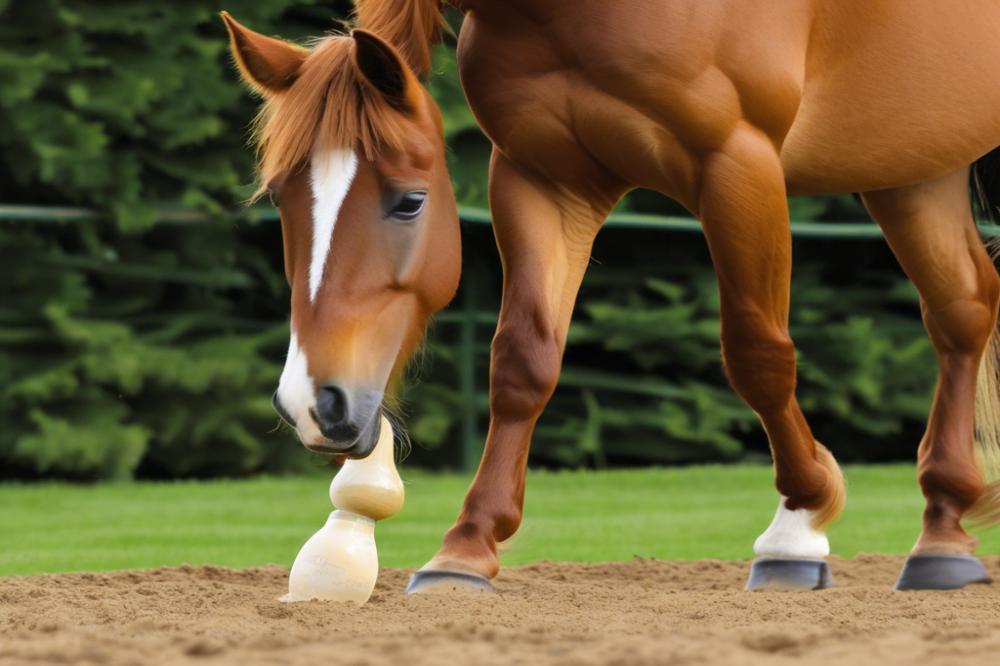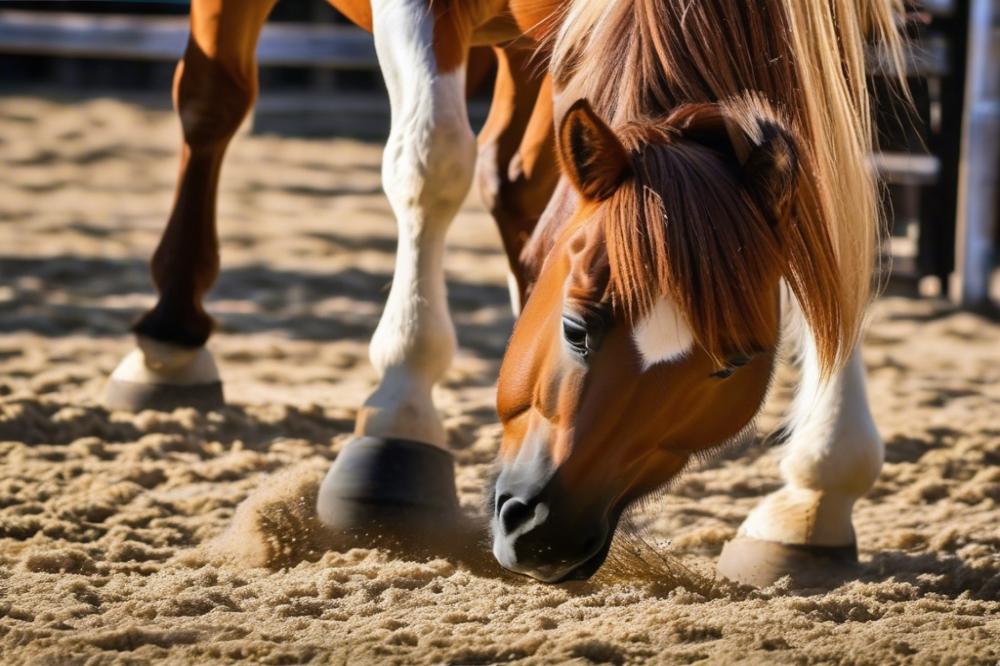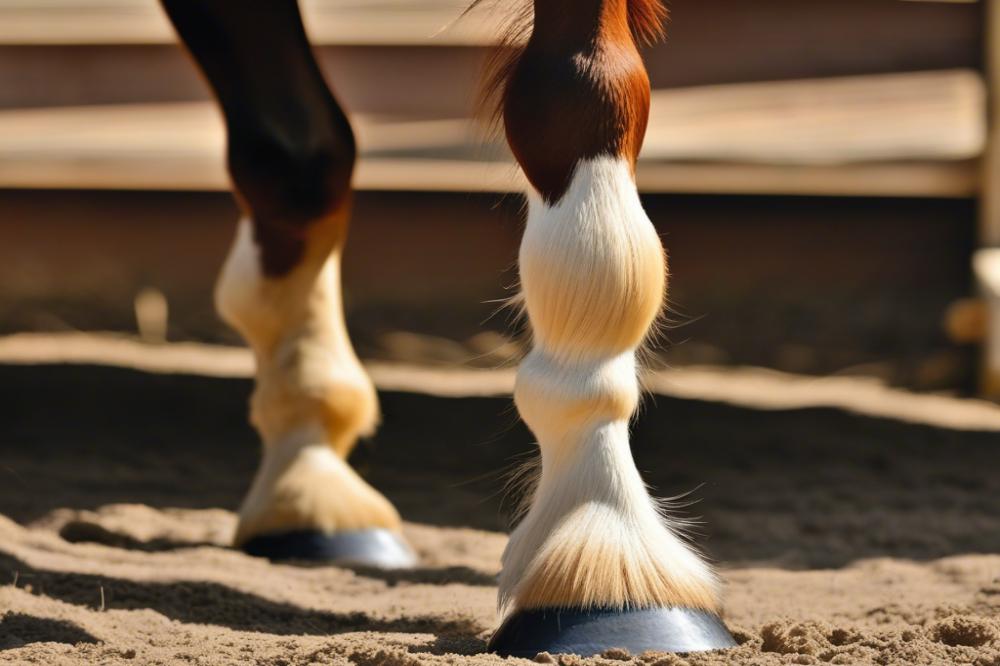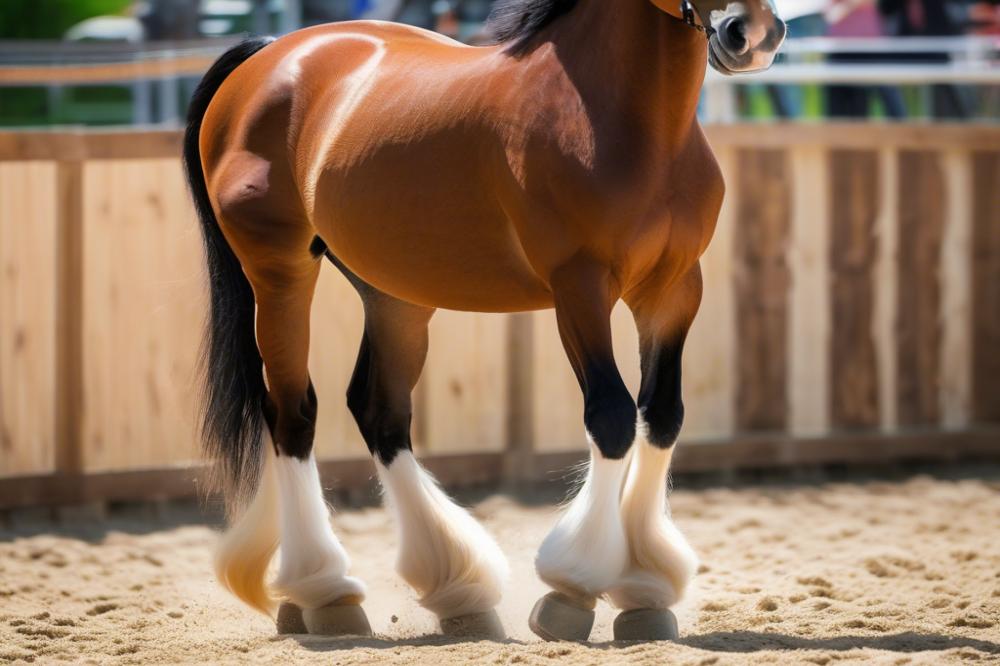Understanding Baby Horse Hooves
When we think about horses, we often picture their majestic bodies galloping gracefully across open fields. However, what many might not realize is just how vital those little baby horse hooves are in the grand scheme of equine health and development. Just like a strong foundation is crucial for a sturdy house, robust hooves are essential for young horses. Foals, as baby horses are called, depend on their hooves for mobility and overall well-being. Without healthy hooves, even the most beautiful horse could face serious challenges.
The hooves of a foal evolve during their early days and serve several important purposes. They not only support the young horse’s weight but also act as shock absorbers when running and playing. In addition, understanding the intricacies of horse hooves can give insights into equine anatomy that are key for anyone involved in horse care. A well-formed hoof can contribute significantly to a horse’s balance and agility, which are crucial traits as the foal grows—turning from a wobbly baby into a powerful athlete.
Moreover, the journey to strong horse health starts right from the foal stage. Proper care during this vital time ensures that the horse grows up healthy and sound. Did you know that a foal’s hooves can grow remarkably fast? Much like a teenager’s hair, these hooves can seem like they need constant attention. Regular trimming and proper hoof care can help prevent problems as they grow older. And don’t forget, a foal’s diet—including mare milk benefits—plays a significant role in hoof development. Rich in nutrients, this milk helps support their overall growth during those early weeks.
If you’re curious about the different breeds and their specific hoof requirements, a breeds of horses list can provide some fascinating insights. After all, some breeds have unique characteristics that affect hoof shape and health. Who would have thought that horse genetics played a part in hoof care? It’s a wild world out there, full of surprising connections!
So, whether you’re a seasoned equestrian or just someone who loves to watch foals frolic, keeping an eye on their hooves is essential. Healthy hooves mean healthy horses, and it’s often said that “no hoof, no horse.” Taking good care of those tiny, adorable hooves can set the stage for a lifetime of health and happiness in every horse’s journey.
The Anatomy of Baby Horse Hooves

When we look at the hooves of young horses, or foals, we can see their unique structure. Hoof anatomy might sound complicated, but it’s pretty straightforward once you break it down. Every hoof consists of several key parts: the hoof wall, the sole, and the frog. Each has its job to do, just like a well-oiled machine.
The hoof wall is the outermost part. It protects the inner structures, much like a shield. Made mostly of keratin, it’s tough yet flexible. Did you know that it grows continually? That’s right! Just like our nails, it needs regular trimming. This is crucial for good equine health.
Next, let’s talk about the sole. This is the bottom part of the hoof. Its main function is to provide support. Unlike the hoof wall, the sole is softer and not as thick. You could compare it to the padding in a good pair of shoes. It helps absorb shock when the horse walks or runs across different terrains.
Now we move on to the frog. This part is often overlooked, but it plays a vital role in hoof function. Shape-wise, it kind of looks like a triangle. The frog acts like a cushion for the hoof, absorbing impact and assisting with circulation. It also helps in preventing dirt and debris from getting inside. Proper frog health is important to overall horse care.
Foal care includes attention to these hooves, as they differ from adult horse hooves. Baby hooves are typically softer and more pliable. Young horses require special consideration because their hooves are still developing. Over time, as they age, the hooves harden and become more robust. This transition emphasizes the importance of good horse health practices from a young age.
A fun fact to remember is that baby horse hooves can grow quickly! With proper nutrients and a good environment, they strengthen over time. Regular observation is key. Caring for young hooves is as crucial as any aspect of horse care.
Growth and Development of Baby Horse Hooves

From the moment a foal enters the world, its hooves begin a fascinating journey. These small structures undergo significant changes during their first years of life. Each stage of hoof growth tells a story about the young horse’s development. Understanding these stages helps in maintaining equine health.
Initially, at birth, hooves are soft and fragile. This is perfectly normal since foals need to navigate a new environment. After a few weeks, the hooves start to harden. The change is crucial as they support the foal’s weight. Owners should monitor this transformation closely because proper care at this age sets a strong foundation for the future.
Nutrition plays a pivotal role in hoof growth. A balanced diet rich in vitamins and minerals is essential for strong horse hooves. Nutrient deficiencies can lead to weak or deformed hooves. Think of it like building a house. If the materials are poor, the structure will surely crumble. Incorporating quality feed helps keep hooves healthy as they develop.
The environment also influences hoof growth significantly. Foals who have access to soft, clean ground tend to have better feet. A muddy or rocky area can cause various issues. It’s like walking on ice in flip-flops—dangerous! Keeping foals in safe, dry places supports proper hoof health while they grow.
Genetics is another important factor. Some breeds naturally have stronger hooves than others. Certain lineage may have stronger hoof traits, while others may require more attention to hoof care. Just like inheriting traits from a parent, a foal’s hoof quality can be a familial affair.
Regular hoof care is key as well. Trimming and balancing the hooves helps maintain proper shape and function. Getting a farrier involved early on can make a world of difference. Hoof maintenance ensures that as the baby horse matures, it can gallop smoothly and without issues.
As a foal grows into a mature horse, understanding the nuances of hoof development becomes invaluable. Every little detail contributes to overall horse health. Watching a foal run freely is a joy, and knowing that its hooves are up to the task provides peace of mind to any owner.
Common Health Issues Related to Baby Horse Hooves

When it comes to foal care, one of the first things to remember is that healthy hooves are crucial for young horses. They aren’t just walking around on comfy shoes; those hooves are vital to their overall equine health. However, young horses often face common hoof problems that can hinder their growth and well-being.
Laminitis
Laminitis is a serious condition that affects the hoof’s inner structure. It occurs when the tissues connecting the hoof wall to the foot become inflamed. Picture a rubber band stretching too far—that’s what happens. Young horses are at risk if they’re overfed rich grains or lush grass. Always watch their diet closely. If your baby horse seems to be reluctant to move or has an unusual stance, it’s time to call the vet.
Thrush
Another problem to look out for is thrush. This nasty little fungal infection loves damp, dirty environments. If a foal’s hooves are regularly muddy or neglected, thrush can set up camp. Symptoms often include a foul smell, black discharge, or soreness when touched. Keeping horse hooves clean and dry makes a world of difference. Regular cleaning can prevent this unpleasant issue. If you spot it early, treatment is typically straightforward. Medications and proper hoof care will usually take care of it!
Hoof Cracks
Hoof cracks might seem minor but can lead to bigger issues. They often surface due to dry and brittle hooves. Young horses might not yet have solid hoof walls, making them more vulnerable. A crack can hurt just as much as it looks bad. Moisture and humidity changes can cause cracks, so be mindful of your environment. Regular inspection is key. If you find signs of cracking, consult a farrier. They’ll help you understand if it’s a simple fix or something that needs more attention.
Identifying Early Signs
When caring for horse hooves, keeping an eye out for signs of trouble is essential. Pay attention to any limping or unusual behavior. If a foal is suddenly more cautious while playing, it might be time for a closer look. A good rule of thumb is to check their hooves weekly. You can use a pick to clear out dirt and debris, which helps you spot any issues early. Small actions can lead to significant improvements in their health.
Building a routine is the best way to stay on top of hoof care. Talk to fellow horse owners or consult with your farrier for tips. A little education goes a long way in ensuring the best care for your young horse. After all, happy hooves lead to happy rides!
Hoof Care and Maintenance for Young Horses
Caring for young horse hooves is a bit like tending to a growing child. Imagine those tiny feet as the foundation of their health. If you neglect them, it’s like ignoring a cracked foundation on a house. Regular trimming is essential, as hooves grow continuously. Just like a person’s nails, they can split or crack if not cared for properly.
Cleaning plays a big role in hoof care, too. Rocks, dirt, and debris can get wedged in there, causing discomfort or even injury. A quick inspection should become part of your routine. Picture this: a daily check is like brushing teeth. It’s a small thing, but it makes a huge difference in overall equine health.
When it comes to shoeing, not every young horse needs it right away. If your foal is mostly on soft ground, they might be fine without shoes for a while. However, if they’re hitting hard surfaces, proper shoeing might be required. Think of shoes as their armor against the rough world.
Keep in mind that horse hooves are made up of sensitive structures. Understanding equine anatomy helps you appreciate why care matters so much. Poor hoof health can lead to serious troubles down the line. Using the right tools is crucial too. Investing in good hoof care tools now can save you headaches later.
Fret not if your foal resists at first. Horses aren’t always fans of hoof care. Use treats as a bribe or offer gentle pats. This part of foal care requires patience and love. A calm approach can work wonders.
Lastly, regular check-ups with a veterinarian or farrier should be on your calendar. Their expertise can catch problems before they become bigger issues. Keeping a close eye on horse health will benefit you both in the long run.
Always remember, your young horse relies on you to help them stand tall and strong on those precious hooves. With a bit of dedication and care, you’ll both walk that path together for years to come.
Nutrition and Its Impact on Hoof Development
When it comes to horse care, nutrition plays a huge role in hoof health. It’s like putting the right fuel in a car; a good diet means strong, healthy hooves. Hooves are basically a horse’s foundation. If they are weak, the whole structure can suffer. A well-balanced diet is essential for strong horse hooves.
Various nutrients impact hoof health. Protein, for instance, is key. High-quality protein helps build keratin, which is the main component of hooves. Without enough protein, a foal might have soft, weak hooves that struggle to grow. It’s like trying to build a house with no bricks!
Minerals and vitamins also play important roles. Calcium and phosphorus work together to strengthen bones and hooves. Biotin is another superstar nutrient often discussed when it comes to horse health. This B-vitamin aids hoof growth and improves overall condition. Just think of it as a multi-vitamin specifically for hoof care!
Feeding practices are just as important as the feed itself. Offering a good quality hay that’s rich in nutrients is a wise practice. On top of that, grains can be introduced gradually. However, moderation is key; too much grain can cause issues. Keeping things balanced is vital for foal care.
Consider also adding supplements if your vet recommends them. Some nutrients are hard to get from forage alone. There are specific hoof supplements designed to assist with hoof development. Always discuss with a veterinarian before starting any new regimen. They can help tailor a plan that fits your foal’s specific needs.
Lastly, fresh water must be readily available. Hydration should never be overlooked. Just like humans, horses need to drink enough to stay healthy. Proper hydration supports all aspects of equine anatomy, including hoof growth. So, keep those water buckets full!
In the end, remember that a well-rounded diet is like a recipe for success. Healthy hooves are a blend of the right nutrients and thoughtful care. It’s a combination that leads to strong, sturdy hooves.
Training and Exercise Considerations for Baby Horses
When it comes to young horses, exercise plays a vital role in their hoof strength and overall development. Just like us, baby horses need to build strength and coordination. Small doses of activity help their hooves become tougher and more resilient. Think of their hooves as building blocks; they need the right amount of pressure to grow solid and healthy.
Starting with gentle exercises is key. Opt for short sessions that focus on walking and light trotting. After all, you wouldn’t want a young athlete to jump straight into a marathon! As the foal becomes more comfortable, gradually introduce varied terrains. Soft grass, packed dirt, and even a little sand can all help in developing their hoof structure. Horses aren’t picky about their playgrounds, which is a bonus!
Safe Practices for Introducing Young Horses to Training
Safety is everything when it comes to horse care. First off, creating a calm environment is crucial. Horses can be skittish; loud noises may scare them. Introduce them to training aids slowly, giving your foal time to sniff and explore. Patience will earn you respect and trust. Remember, these baby horses aren’t just little bundles of joy; they’re also curious explorers!
Don’t forget about proper footing. Slippery surfaces can lead to accidents, which no one wants. A solid footing gives young hooves a chance to adapt and grow. Consider doing some exercises in an arena where the ground is even. Keeping it smooth and safe goes a long way in promoting their equine health.
Listening to the baby horse is another significant factor. Every horse has its own personality, much like people. Some may love to run, while others prefer a slower stroll. Watching for signs of fatigue is important. A tired foal won’t benefit from more training; it’s like pushing a child to stay awake for a late show. Take breaks, offer water, and always check for injuries on their hooves after each session.
Incorporating playful activities can also enhance training. Things like light games or even some social interaction with other foals will make exercise enjoyable. After all, horse health isn’t just physical; mental well-being is equally important. Finally, regular hoof care cannot be overlooked. This includes trimming and checking for any signs of soreness or imbalance. Doing so keeps those young hooves in tip-top shape!
Wrapping Up: The Importance of Hoof Care
When it comes to the health of young horses, those little hooves play a monumental role. Healthy hooves provide a sturdy foundation for growth and activity, much like how a strong pair of boots keeps you steady on your feet during a long hike. Just like we wouldn’t run a marathon in flip-flops, your equine friends deserve the best care for their feet.
Hoof care is not just a chore to check off your list. Think about it: if a horse isn’t comfortable on its feet, it won’t be trotting around the ring or participating in events like the horse halter class with joy. Regular vet check-ups and proper hoof maintenance are what make a happy and thriving horse. If you’re ever unsure, consider the differences between a draft horse vs Clydesdale to understand how varying hoof structures can impact care needs.
Grooming routines should include checking their hooves, looking for signs of injury or infections. Imagine noticing a small issue early before it becomes a bigger problem, like a farmer who spots weeds before they take over the field. Don’t wait for cracks or shoddy hoof walls to become apparent. Be proactive, and remember that prevention can save you time, money, and headaches down the road.
Engaging with your horse doesn’t end in the saddle. It’s your responsibility to prioritize their overall well-being. After all, behind every galloping horse is a dedicated owner willing to make that extra effort for their health. So, as you continue your equestrian journey, make it a point to prioritize hoof care just as you would for training and nutrition. Your horse will appreciate it more than you know!



